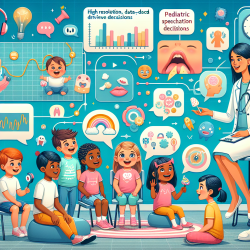Introduction
In the ever-evolving field of healthcare, data-driven decisions are paramount. The recent study titled "Multi-step ahead predictive model for blood glucose concentrations of type-1 diabetic patients" offers groundbreaking insights that can significantly enhance diabetes management, particularly for children. This blog aims to translate these findings into actionable strategies for practitioners, emphasizing the importance of predictive modeling in improving patient outcomes.
The Power of Predictive Modeling
Managing Type-1 Diabetes (T1D) involves continuous monitoring of blood glucose (BG) levels to make informed decisions about insulin administration and dietary intake. The study introduces a novel multi-component deep learning model, BG-Predict, which forecasts BG levels with remarkable accuracy. By predicting future BG levels, this model helps reduce the risks associated with hypoglycemia and hyperglycemia, thereby improving the quality of life for patients.
Key Findings and Their Implications
The study evaluated the BG-Predict model using data from 97 patients, achieving an average root mean squared error (RMSE) of 23.22 mg/dL for a 30-minute prediction horizon. The model's ability to accurately predict BG levels was further validated through Clarke and Parkes error grid analyses, with a high percentage of points falling within Zone A, indicating clinically acceptable predictions.
- Accuracy: The model demonstrated high accuracy in predicting BG levels, with 80.17% of predictions falling within Zone A of the Clarke error grid.
- Adaptability: The model's multi-component approach allows it to adapt to individual patient data, enhancing its predictive capabilities.
- Clinical Relevance: Accurate predictions help practitioners tailor interventions, potentially reducing the incidence of severe glycemic events.
Implementing Predictive Insights in Practice
For practitioners, integrating predictive models like BG-Predict into clinical practice can revolutionize diabetes management. Here are some steps to consider:
- Data Integration: Utilize comprehensive patient data, including historical BG levels, insulin doses, and dietary intake, to train predictive models effectively.
- Continuous Monitoring: Implement continuous glucose monitoring (CGM) systems to provide real-time data, enhancing the model's predictive accuracy.
- Personalized Interventions: Use predictive insights to develop personalized treatment plans, adjusting insulin doses and dietary recommendations based on predicted BG trends.
Encouraging Further Research
While the BG-Predict model shows promise, continuous research and development are crucial. Practitioners are encouraged to engage in further studies to refine predictive models, explore new data sources, and validate findings across diverse patient populations.
Conclusion
The integration of predictive modeling in diabetes management represents a significant advancement in healthcare. By leveraging data-driven insights, practitioners can enhance patient outcomes, particularly for children with T1D. Embracing these innovations will pave the way for more personalized and effective diabetes care.
To read the original research paper, please follow this link: Multi-step ahead predictive model for blood glucose concentrations of type-1 diabetic patients.










